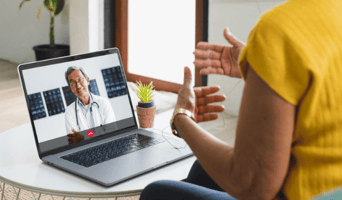Collaboration - A Modern Necessity For Targeted Cancer Treatment?

Cancer continues to be the second leading cause of death, with an estimated 1.9 million new diagnoses and 609,360 cancer deaths in the United States in 2022, according to the American Cancer Society. This statistic alone is astounding, with the number - 1.9 million -rivaling the population size of our largest cities. It would be like the entire population of Philadelphia being diagnosed with cancer or nearly all of Washington, D.C. passing away from it. And we are only talking about one year.
Fortunately, researchers have made productive strides in recent years. The Human Genome Project, described as one of the greatest scientific feats in history, providing fundamental information about the human blueprint, and has greatly accelerated our understanding of cancer types and effectiveness of treatments. While there are more than 100 types of cancer, one may think that having a more prevalent cancer, such as lung cancer, might make it easier to access expertise and treatment. Yet, there are only 64 NCI designated cancer centers in 37 states recognized by the National Institute of Health’s National Cancer Institute. These are organizations that stand out for their ‘scientific leadership, resources, and the depth and breadth of their research in basic, clinical, and/or prevention, cancer control, and population science.’
Of course a patient can still find care at their nearest local hospital. But what happens when a patient needs the expertise from a specialist in their cancer type or subtype? What if they live in the midwest or another rural town where the closest NCI designated cancer center is hundreds of miles away? What about rare cancers or pediatric cancers, where specialists are even more sparse? This is why many patients have found that working with their local general oncologist in addition to a subject matter expert in their cancer subtype, gives them the highest quality care while being able to remain local for most of their treatment. But how do they initiate this process? How do the logistics work? What should they prepare and how will their local physician work with the subject matter expert from afar?
This is why Purview’s CEO, Les Trachtman, sat down with Dr. Ramaswamy Govindan, Director of Oncology at Washington University in St. Louis. After spending nearly 25 years researching and specializing in the treatment of lung cancer, and pioneering studies, including serving as co-chair of the Cancer Genome Atlas Program for lung cancer sponsored by the National Cancer Institute, Govindan is sought out as a specialist for his extensive experience and expertise. This often comes in the form of a physician consultation or second opinion with the patient.
During this conversation, Trachtman and Govindan discussed how cancer research has evolved, becoming more narrowc and siloed as we learn more about genomes and cancer subtypes. Using small cell lung cancer as the example, Govindan explained that these subtypes have responded very differently to the same treatments, underscoring the importance of refining a diagnosis to the specific subtype so treatment can become as targeted as possible. So how does a patient access expertise like Dr. Govindan’s when they are hundreds of miles away?
Aside from technologies that bridge the gap, Dr. Govindan tells us that the answer is collaboration, emphasizing the importance of coordination and communication between a patient’s local treating oncologist and specialty oncologists:
Trachtman: We know that patients are hesitant to ask their local treating physician for a referral. Some will actually hide it from their physician, but you’re saying that this is more of a partnership?
Govindan: “Absolutely. It has to be. That’s the only way it will work for everybody.”
Govindan goes on to reassure patients that oncologists are familiar with second and third opinions. He himself often provides opinions for patients simultaneously seeking consultations from multiple institutes. He says that it is not rare for a patient to seek his opinion early on, and then come back later when their disease progresses or something changes, he says. Physicians rarely get offended and are even reassured when a patient seeks additional information from a specialist.
Discussing when second opinions are most appropriate, Govindan explains that anytime a patient wants more information or clarification of information, it’s a good idea to get a second opinion. This should include a comprehensive review from not only an expert in their cancer type, but other relevant disciplines as well, which may range from radiology, pathology, surgery, and others. The only time a patient or their family may not want to consider a second opinion is when the patient is in an emergent situation, or hospitalized.
Govindan encourages patients to learn and advocate for options they are interested in through online resources and social media support groups, but adds that we live in a time of information overload, where there are endless treatment options. Patients should gather this information but remember to review with a subject matter expert and understand how it applies to their case.
—
The National Institutes of Health National Cancer Institute has designated 71 leading cancer institutes in 36 states who are furthering cutting edge research and treatment, including the Siteman Cancer Center at Washington University of St. Louis. More than 46 million Americans, or 15% of the population in the U.S., reside in what the CDC calls ‘rural areas,’ and experience poorer health outcomes compared to populations living in ‘urban areas,’ regardless of socioeconomic status.
Watch the Entire Webinar On-Demand and Register for The Next In the Series
Patient Resources
Provider Resources
Read 'Second Opinions 101,' written in collaboration between Purview and the Advisory Board
Check out Purview's Remote Second Opinion Maturity Model
Reach Out to Us With Questions



